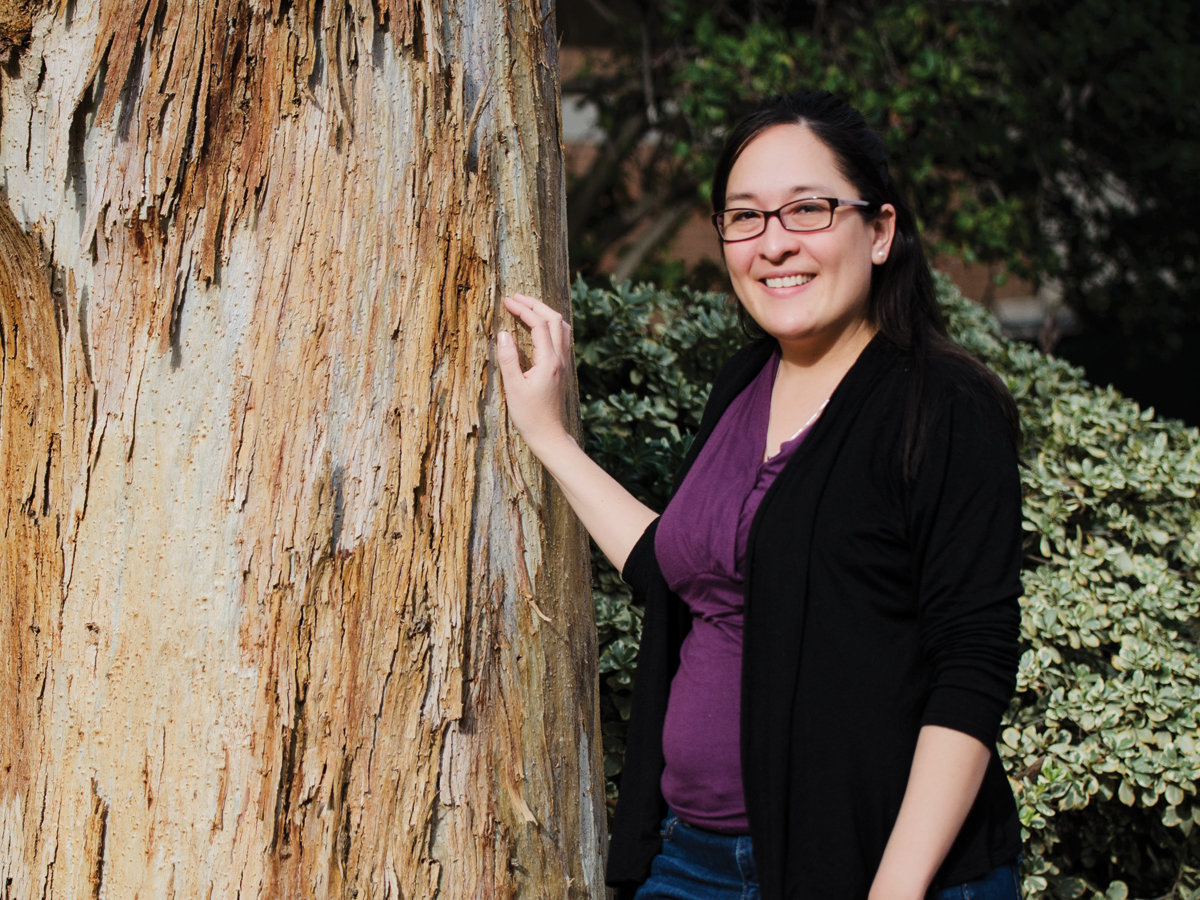
A research group that includes UCR Botany and Plant Sciences postdoctoral research fellow Katia Silvera has received $469,000 in funding from the National Science Foundation (NSF) to conduct research on an unusual form of photosynthesis found in plants that inhabit dry places.
Plants that live in dry climates utilize Crassulacean Acid Metabolism (CAM), a type of photosynthesis that increases the efficiency with which these plants use water. Through CAM, carbon dioxide is changed by multiple chemical reactions into an acid. This is done at night when the stomata — pores on the surface of leaves that regulate gas exchange — are open because it is cooler than the daytime.
During the day, these stomata close, preventing water from evaporating. At this time, the plant changes the acid back to carbon dioxide, which is then used in combination with sunlight for photosynthesis. Silvera intends to examine what induces this phenomenon in orchids.
“I started getting interested in orchids because my parents have an orchid farm in Panama; I’m originally from Panama. Since I was a kid I’ve been surrounded by orchids and learning about different species,” Silvera said.
According to the Rainforest Alliance, there are 25,000 to 30,000 separate orchid species in the world; Panama has approximately 100 species. The Smithsonian Tropical Research Institute operates there and Silvera began volunteering at the institute as an undergraduate.
The project began in January 2015 and will last four years. Silvera is collaborating with researchers from the University of Georgia, University of Buffalo and University of Texas.
She is currently in the first phase of the project which will seek to determine the genetic origins of CAM by comparing various species of Asparagales, the order that orchids are a part of.
Of the known species of orchids, only a fraction of them are known to use this form of photosynthesis, but Silvera suspects many more have the capability of performing CAM. Through measurements of carbon isotopes in the leaves, she will be able to identify orchids which use CAM as a photosynthetic process. Then she will compare those plants with other orchids that do not use CAM and identify the genes involved in the CAM cycle.
Some species of orchids may be able to utilize various types of photosynthesis depending on their environmental conditions. By subjecting these species to drought-like conditions, CAM expression can occur and their genetic expression can be monitored. Silvera will compare many species here at UCR to determine what kinds of plants CAM can be induced in.
“We do something called transcriptomics, in which we look at all the genes and how they’re expressed. And we can do that here because the University of California, Riverside has a fantastic genomics institute,” said Silvera.
The team applied for the NSF grant in January 2014 and received approval three months later. Team member Jim Leebens-Mack from the University of Georgia was the first to learn of the funding, after which he called Silvera. She said she was surprised to receive the funding from the NSF even though she had previously received funding from the Environmental Protection Agency. “It’s my first NSF grant … so I’m learning as I go,” she said.
Besides contributing to our understanding of plant evolution, this project could jumpstart a new breed of engineered crop with built-in drought resistance. Concerns about global warming and increased population size make this project pertinent.
Leebens-Mack said, “If we can understand how these plants adapt to water stress at the molecular level, we can learn how to increase water efficiency in economically important plants like biofuel and food crops.”
Of the total number of applications that it receives every year, the NSF funds nearly 25 percent or 11,000 taxpayer-supported projects. Katia Silvera is also the namesake of the orchid Lophiaris Silverarum, a newly discovered Panamanian orchid.








